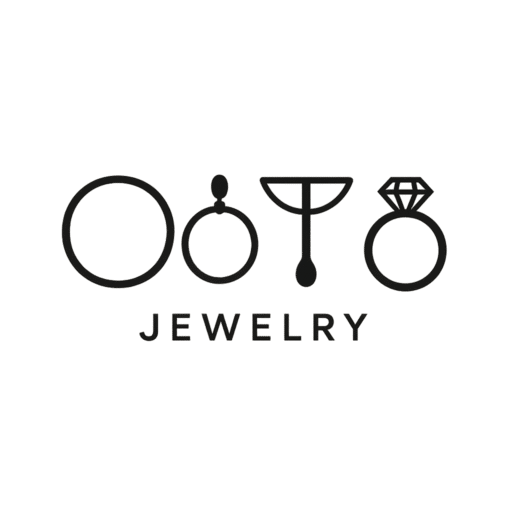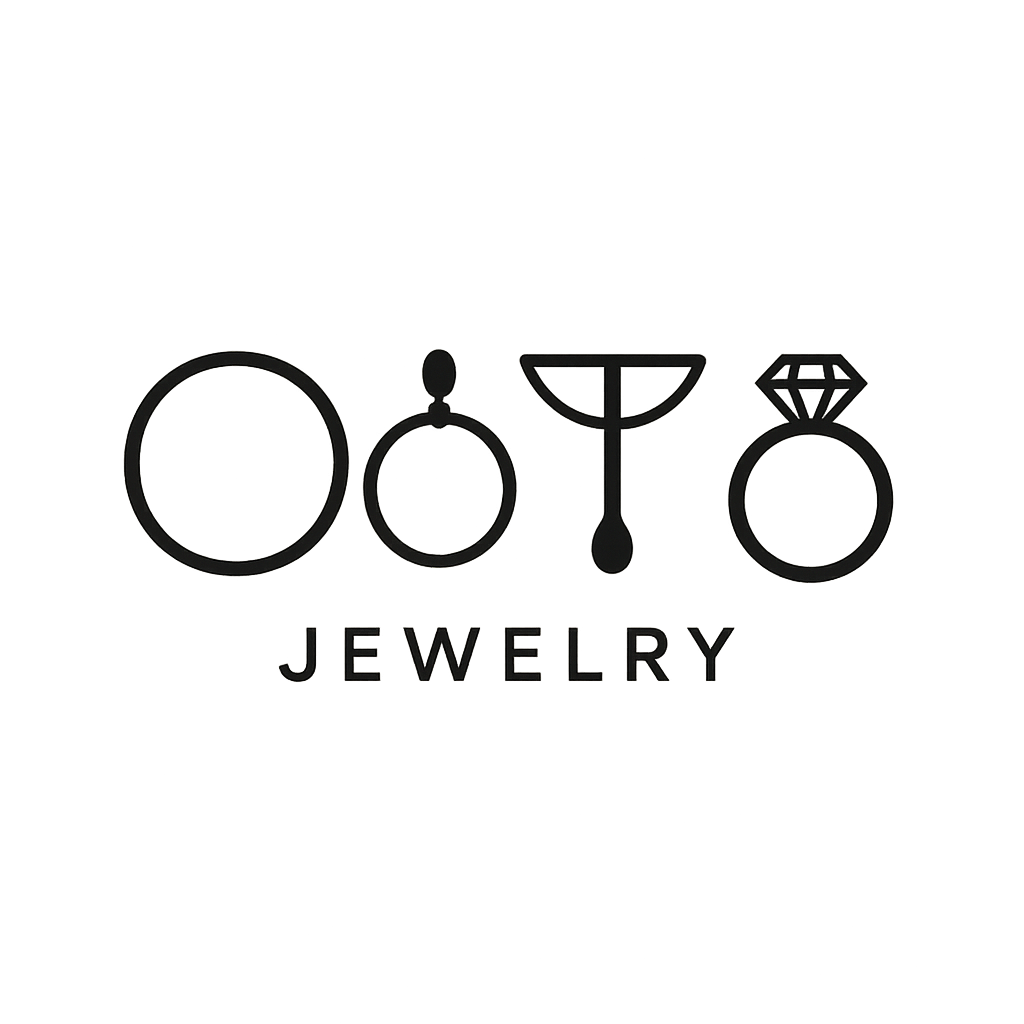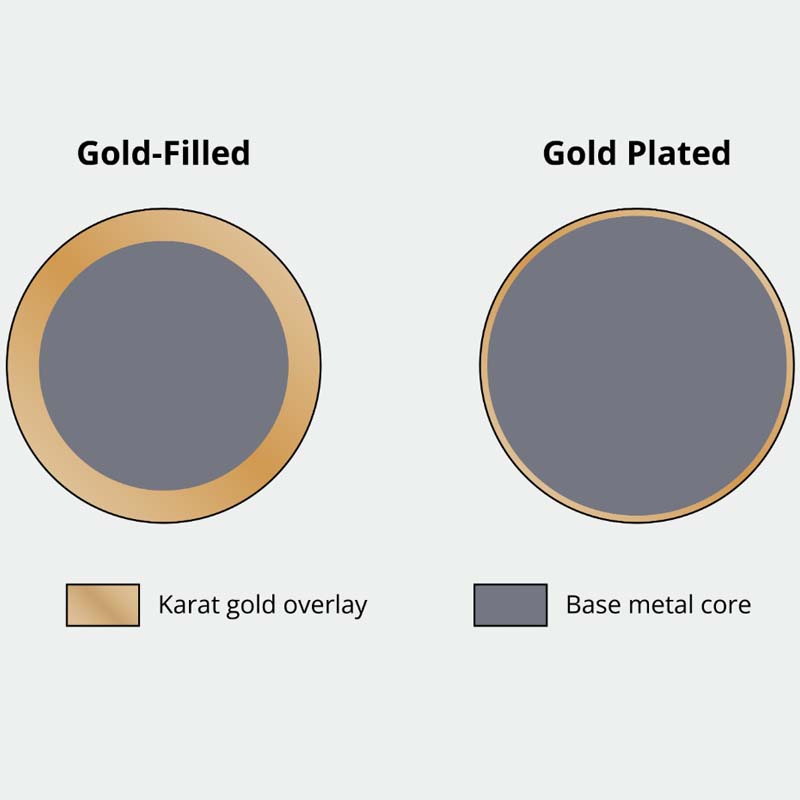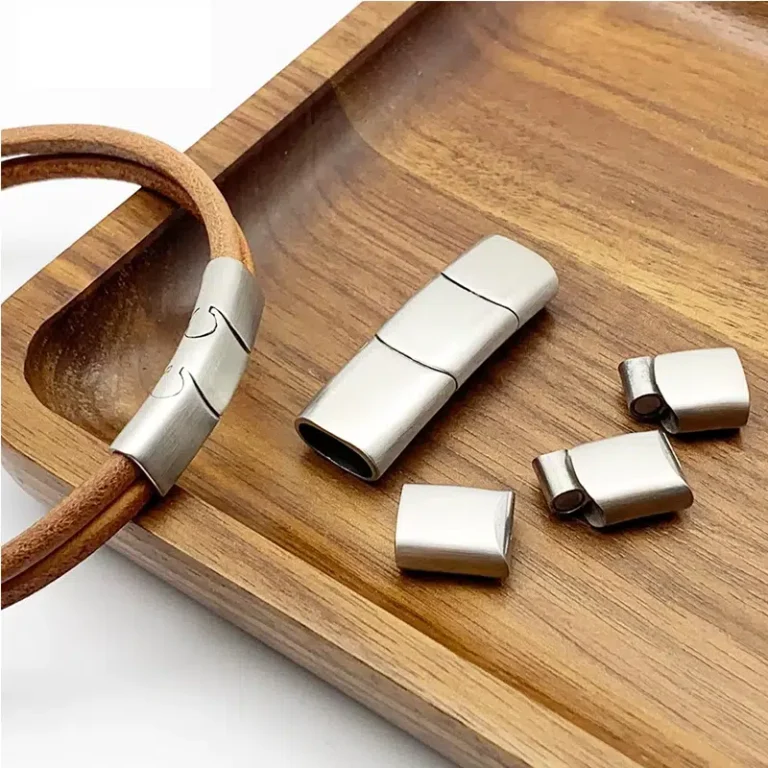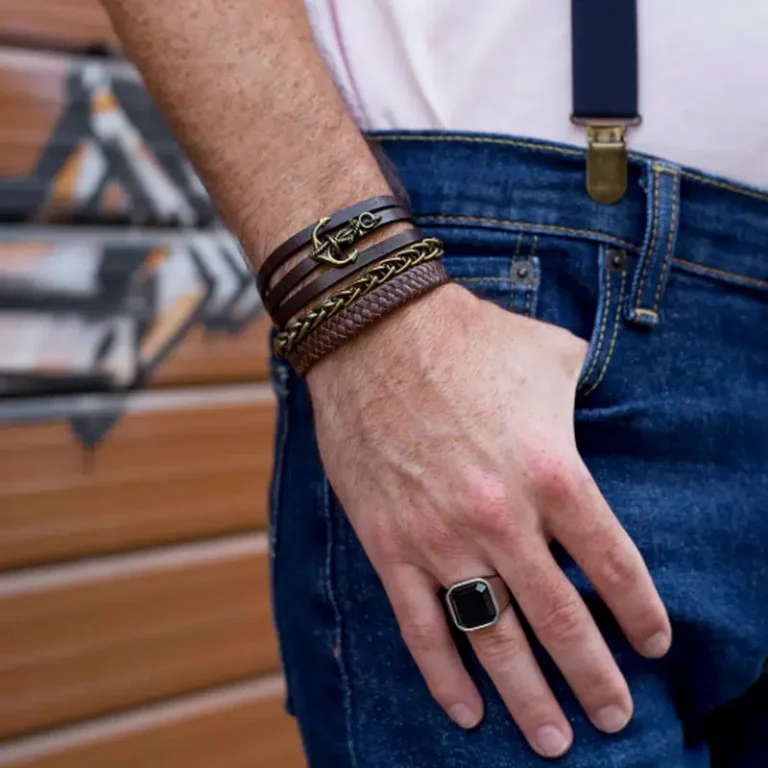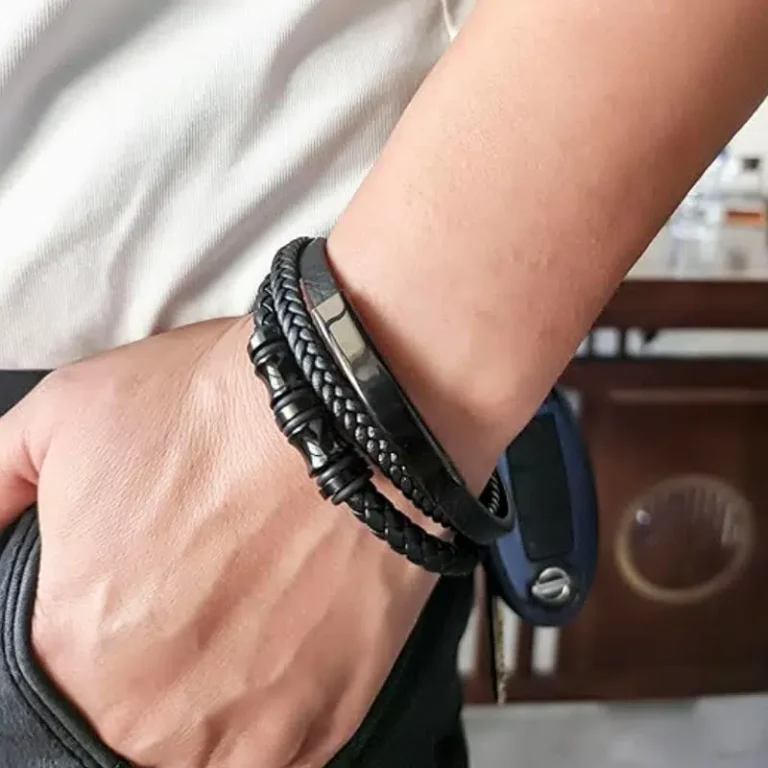Introduction
Gold filled vs gold plated jewelry, which one is the most best for you? In this guide, we’ll compare with them and tell you everything about thier differences, from the definiton, main differences, pros and cons, and how to care of them.
What is Gold-Filled Jewelry?
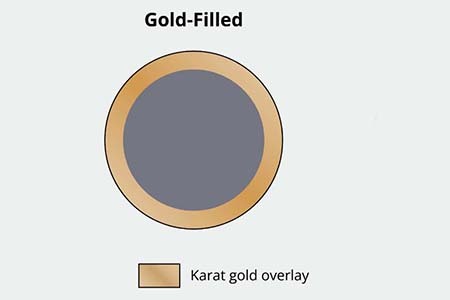
Typically, gold filled jewelry has 5% solid gold that is attached to a base metal through mechanical means. Think of it as a gold sandwich that is thick, with the base metal in the middle and gold wrapping and soldering around it.
The process is apply heat and pressure to bind 12k, 14k or 18k gold sheet to base material (such as bronze, brass or silver). This creates a permanent bond that won’t peel or flake off like a thin coating would.
What is Gold-Plated Jewelry?
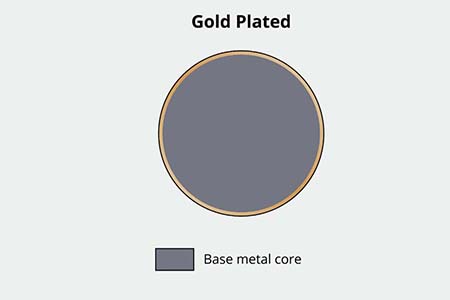
Gold-plated jewelry is mean that apply a type of electroplating process and make the base material have a thin gold layer.. The process also requires dipping the base piece in a gold solution, using electrical current to deposit gold particles on the work surface. The gold layer on plated jewelry measures less than 0.05% of the total piece. That is super thin – it would be comparable to putting a few coats of paint on a wall.
Gold filled vs Gold plated – Major Differences
Gold Thickness and Content
The difference between gold filled and gold plated is enormous. If gold filled is like a thick cover on a book, gold plated is like a sheet of paper by itself.
Gold Filled:
- 5% gold content by weight
- Gold layer thickness: 50-100 micrometers
- Mechanically bonded (a permanent attachment)
Gold Plated:
- Less than 0.05% gold content
- Gold layer thickness: 0.5-2.5 micrometers
- Electroplated (a surface coating only)
Durability & Life Span
Gold filled jewelry will last 10-30 years of use, under normal wear. I’ve seen pieces from the 1950s that still look good today. The thick gold layer can handle daily activities without wearing through.
Gold plated jewelry typically lasts 6 months to 2 years depending on how often you wear it. The thin coating wears away from friction, washing, and contact with skin oils.
Tarnish and Wear Resistance
Gold filled pieces resist tarnishing because the real gold surface doesn’t oxidize. The base metal stays protected underneath the gold layer. Even if the gold jewelry is scratched, there is enough thickness of gold to maintain the gold color.
Gold plated jewelry can tarnish very quickly once the thin coating wears off. The base metal can show through, which is black or green or brown, depending on what metal the makers used base.
Price Differences
Gold filled jewelry costs more upfront but offers better value over time. A gold filled chain might cost $50-150, while the same style in gold plated could be $10-30.
When you calculate cost per year of wear:
- Gold filled: $2-5 per year
- Gold plated: $5-30 per year (due to frequent replacement)
Pros and Cons of Gold-Filled Jewelry
Pros
1. Thick Gold Layer
Gold filled contains 100 times more gold than plated alternatives. This means real gold content that you can see and feel. The substantial layer gives you authentic gold properties without solid gold prices.
2. Long-Lasting Quality
Gold filled jewelry will last 10 to 30 years or longer if properly cared for. I have customers with gold filled jewelry that they inherited from their grandmothers that still look pretty much intact. It is simply better for rings such as engagement rings, wedding bands, or heirloom pieces because it holds up much better.
3. Tarnish-Resistant Properties
Gold filled finish resists fading, flaking, and oxidation better than anything that is plated. The real gold surface doesn’t react with air, water, or most chemicals. This means less maintenance and consistent appearance.
4. Hypoallergenic Benefits
The real gold surface makes gold filled jewelry safer for sensitive skin. Since your skin only touches gold (not base metals), allergic reactions are rare. People with metal sensitivities can usually wear gold filled pieces without problems.
Cons
1. Limited Design Flexibility
The manufacturing process for gold filled jewelry requires thicker materials and specific techniques. This means some ultra-fine or very intricate designs aren’t possible. Delicate filigree work or extremely thin chains are harder to make in gold filled.
2. Not a Long-Term Investment
While gold filled lasts longer than plated, it’s not the same as solid gold for investment purposes. The base metal reduces resale value significantly. Gold dealers won’t buy gold filled pieces at gold prices.
3. Visible Seams in Lower Quality Pieces
Cheaper gold filled jewelry sometimes shows seams where the gold sheet wraps around edges. In poorly made pieces, you might see the base metal at connection points or areas that get heavy wear.
Pros and Cons of Gold-Plated Jewelry
Pros
1. Affordable Price Point
Gold plated jewelry offers the gold look at budget-friendly prices. You can buy multiple pieces for the cost of one gold filled item. If you want to use different jewelry to fit the outfit of each day, gold-filled jewelry will be the best option.
2. Good for Occasional Wear
For special events, photo shoots, or pieces you’ll wear only a few times, gold plated works well. The short lifespan doesn’t matter if you’re not wearing it regularly.
3. Lightweight Comfort
Large statement pieces in gold plated are often more comfortable than solid or filled alternatives. Big earrings, chunky necklaces, and oversized bracelets feel lighter and put less strain on your ears or neck.
Cons
1. Easy Tarnishing
Gold plated jewelry can tarnish very quickly when it is exposed to sulfides in the air. In most instances in high humidity or pollution areas the jewelry can blacken in weeks. The gold plating is very thin and cannot protect the base metal from damage from the environment.
2. Skin Discoloration Problem
When the jewelry is worn then the gold plating is worn off and the base metals – usually copper and brass will oxidize on your skin. This creates the famous “green skin” problem that many people experience with cheap jewelry. The discoloration is harmless but embarrassing.
3. Chipping and Peeling Problems
The electroplated coating can chip off from normal wear. Once it starts peeling, the process accelerates. You’ll see flakes of gold coming off, leaving bare spots that look terrible.
4. Skin Irritation Potential
Base metals like nickel and brass can cause allergic reactions. When the plating wears thin, these metals contact your skin directly. This leads to rashes, itching, and red marks.
5. Short Lifespan Reality
Most gold plated jewelry shows wear within 6 months of regular use. Even with careful handling, the coating gradually disappears. This means constant replacement costs that add up over time.
6. No Resale Value
Gold plated pieces have no precious metal value. Jewelry stores and gold buyers won’t purchase them. Once they wear out, they’re essentially worthless except as costume jewelry.
Difference Between Gold Filled and Plated
Some manufacturers will sell gold-plated jewelry as gold-filled jewelry. How can we tell them apart to limit our losses?
1. Examine Stamps
- Gold filled: Look for “GF”, “1/20 14K GF”, or “14K Gold Filled”
- Gold plated: Look for “GP”, “GE” (gold electroplate), or “HGE” (heavy gold electroplate)
2. Weight Test
Gold filled pieces will feel heavier because of the amount of gold. Pick up similar sized pieces – gold filled will weigh more.
3. Edge Inspection
Look carefully along the edges, clasps, and join points. Gold filled maintains the colour of gold, while plated shows the base metal after wear.
Neither should stick to a magnet if they contain gold.
4. Magnet Test
Neither should stick to a magnet if they contain gold…However, some cheap plated pieces use magnetic base metals, so this test can identify very low-quality items.
5. Professional Testing
You can find a jewelers in your local place, they can use acid tests or electronic gold testers to determine gold content accurately, a reliable test way for you.
Care and Maintenance Instruction
For Gold Filled Jewelry:
- Store in a dry and cool location.
- Dip soft cloth into mild soap, and wipe it.
- Remove your jewelry prior to getting into chlorinated water.
- Do not use anything that could be harsh including any abrasives.
- Professional cleaning (once every few years).
For Gold Plated Jewelry:
- Store your jewelry with space between to avoid scratching each piece.
- Gently clean with only a soft damp cloth.
- Take off jewelry when you’re going to do exercise or take a shower
- Avoid all chemicals, including perfume and lotion.
- Go to a store and apply clear nail polish on the back of your piece (to apply a protective barrier against wear).
Final Thoughts:
After you have read and absorbed everything, you know exactly what gold-filled and gold-plated jewelry are, and how to distinguish the two so that you will not be led astray. Follow my advice below, and you will make an informed decision at the end.
Choose Gold Filled If:
- You are looking for jewelry to wear on a daily basis.
- You are easy to allergied by metal
- You want the best long-term value instead of upfront savings.
- You want jewelry that will continue to look even over years
- You are buying jewelry as gifts, or for a special occasion.
Choose Gold Plated If:
- You have a limited budget.
- You like changing your style frequently.
- You are in need of jewelry for particular events or photos.
- You want to try out trends without the significant investment.
- You prefer lightweight statement pieces.
Anyway, contact with OOTB to get newest jewelry design and quotation if you want to start your jewelry business.
Frequently Asked Questions
1. Is gold filled real gold?
Yes, gold filled contains real gold. The 5% gold content means actual karat gold (12K, 14K, or 18K) makes up a significant portion of the piece.
2. Will gold plated turn your skin green?
Gold-plated jewelry can turn your skin green. When the thin layer of gold fades off, this will occurs. exposing the base metal and be oxidized. The reaction is harmless but stains your skin temporarily.
3. Can you shower with gold filled jewelry?
You can shower with gold filled jewelry occasionally, but it’s not recommended for daily practice. The thick gold layer can handle water exposure better than plated pieces. However, soap, shampoo, and hot water can gradually affect the surface.
4. How long do they last?
Gold filled jewelry lasts 10-30 years with proper care and normal wear. Gold plated jewelry typically lasts 6 months to 3 years, the last time depend on your times of wear and care.
5. Can you repair gold filled or plated jewelry?
Gold filled jewelry can often be repaired by professional jewelers. The thick gold layer allows for polishing, soldering, and minor adjustments. Gold plated jewelry is usually not worth repairing because the cost exceeds replacement value.
6. Which is better for sensitive skin?
Gold filled is much better for sensitive skin. The real gold surface doesn’t cause allergic reactions in most people. Gold plated pieces can cause problems when the coating wears thin, exposing allergenic base metals like nickel and brass.
Related Resouce
1. Avoid Misrepresentation as to gold content -Cornell Law School
2. Buying Guide for Precious Metal Jewelry – FEDERAL TRADE COMMISSIONCONSUMER ADVICE
3. Jewellery Regulations in the European Union – Compliancegate
4. Thickness requirement for gold plating and gold-filled -JAA
